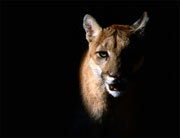Winter Solstice is the Reason for the Season. ReBirth of the Sun - Giver of Life on Earth
The winter solstice occurs exactly when the Earth's axial tilt is farthest away from the sun at its maximum of 23° 26'.
(GR Notes: Yet the sun is closest to the earth, rising only a little way into the sky before it starts sinking again adding to the shortness of light on this day)
Though the winter solstice lasts only a moment in time, the term is also a turning point to midwinter or the first day of winter to refer to the day on which it occurs.
More evident to those in high latitudes, this occurs on the shortest day, and longest night, and the sun's daily maximum position in the sky is the lowest.[1]
The seasonal significance of the winter solstice is in the reversal of the gradual lengthening of nights and shortening of days.
Depending on the shift of the calendar, the winter solstice occurs on December 21 or 22 each year in the Northern Hemisphere, and June 20 or 21 in the Southern Hemisphere.[2]
Winter is a subjective term, so there is no scientifically established beginning or middle of winter but the winter solstice itself is clearly calculated to within a second. For Celtic countries, such as Ireland, the calendarical winter season has traditionally begun November 1 on Hallows eve or Samhain.
(GR Notes: For me, in WI.USA, winter begins on the Winter Solstice as does the New Year, and Midwinter happens on Groundhog Day or First Light on Feb.2. http://www.greenconsciousness.org/ ).
This calendar system of seasons may be based on the length of days exclusively. Most East Asian cultures define the seasons by solar terms, with Dong zhi at the winter solstice as the middle or "extreme" of winter.
This system is based on the Sun's apparent height above the horizon at noon.
Some midwinter festivals have occurred according to lunar calendars and so took place on the night of Hōku (Hawaiian, the full moon closest to the winter solstice).
And many European solar calendar midwinter celebrations still centre upon the night of December 24 leading into the December 25 in the north, which was considered to be the winter solstice upon the establishment of the Julian calendar.[citation needed]
In the Jewish Talmud, Teḳufat Tevet, the day of the winter solstice, is recorded as the first day of the "stripping time" or winter season. Persian culture also recognizes it as the beginning of winter.
The solstice itself may have been a special moment of the annual cycle of the year even during neolithic times. Astronomical events, which during ancient times controlled the mating of animals, sowing of crops and metering of winter reserves between harvests, show how various cultural mythologies and traditions have arisen.
This is attested by physical remains in the layouts of late Neolithic and Bronze Age archaeological sites such as Stonehenge in Britain and Newgrange in Ireland. The primary axes of both of these monuments seem to have been carefully aligned on a sight-line pointing to the winter solstice sunrise (New Grange) and the winter solstice sunset (Stonehenge). Significant in respect of Stonehenge is the fact that the Great Trilithon was erected outwards from the centre of the monument, i.e., its smooth flat face was turned towards the midwinter Sun.[4]
The winter solstice may have been immensely important because communities were not certain of living through the winter, and had to be prepared during the previous nine months. Starvation was common in winter between January and April, also known as the famine months. In temperate climates, the midwinter festival was the last feast celebration, before deep winter began.
Most cattle were slaughtered so they would not have to be fed during the winter, so it was almost the only time of year when a supply of fresh meat was available. The majority of wine and beer made during the year was finally fermented and ready for drinking at this time. The concentration of the observances were not always on the day commencing at midnight or at dawn, but the beginning of the pre-Romanized day, which falls on the previous eve.[5]
Since the event is seen as the reversal of the Sun's ebbing presence in the sky, concepts of the birth or rebirth of sun gods have been common and, in cultures using winter solstitially based cyclic calendars, the year as reborn has been celebrated with regard to life-death-rebirth deities or new beginnings such as Hogmanay's redding, a New Year cleaning tradition.
In Greek mythology, the gods and goddesses met on the winter and summer solstice, and Hades is permitted to enter Mount Olympus {his domain is the underworld so he of course does not get accepted any other time}. Also reversal is another usual theme as in Saturnalia's slave and master reversals.
More at wikipedia
















































0 Comments:
Post a Comment